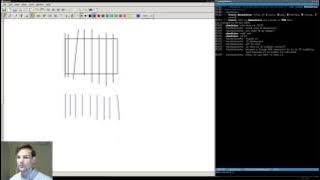4-bit computing
In computer architecture, 4-bit integers, or other data units are those that are 4 bits wide. Also, 4-bit central processing unit (CPU) and arithmetic logic unit (ALU) architectures are those that are based on registers, or data buses of that size. Memory addresses (and thus address buses) for 4-bit CPUs are generally much larger than 4-bit (since only 16 memory locations would be very restrictive), such as 12-bit or more, while they could in theory be 8-bit. A group of four bits is also called a nibble and has 24 = 16 possible values. Some of the first microprocessors had a 4-bit word length and were developed around 1970. Traditional (non-quantum) 4-bit computers are by now obsolete, while recent quantum computers are 4-bit, but also based on qubits, such as the IBM Q Experience. See also: Bit slicing#Bit-sliced quantum computers. The first commercial microprocessor was the binary-coded decimal (BCD-based) Intel 4004, developed for calculator applications in 1971; it had a 4-bit word length, but had 8-bit instructions and 12-bit addresses. It was succeeded by the Intel 4040. The Texas Instruments TMS 1000 (1974) was a 4-bit CPU; it had a Harvard architecture, with an on-chip instruction ROM, 8-bit-wide instructions and an on-chip data RAM with 4-bit words. The Rockwell PPS-4 was another early 4-bit processor, introduced in 1972, which had a long lifetime in handheld games and similar roles. It was steadily improved and by 1975 been combined with several support chips to make a one-chip computer. The 4-bit processors were programmed in assembly language or Forth, e.g. "MARC4 Family of 4 bit Forth CPU" (which is now discontinued) because of the extreme size constraint on programs and because common programming languages (for microcontrollers, 8-bit and larger), such as the C programming language, do not support 4-bit data types (C, and C++, and more languages require that the size of the char data type be at least 8 bits, and that all data types other than bitfields have a size that is a multiple of the character size). The 1970s saw the emergence of 4-bit software applications for mass markets like pocket calculators. During the 1980s 4-bit microprocessor were used in handheld electronic games to keep costs low. In the 1970s and 1980s, a number of research and commercial computers used bit slicing, in which the CPU's arithmetic logic unit (ALU) was built from multiple 4-bit-wide sections, each section including a chip such as an Am2901 or 74181 chip. The Zilog Z80, although it is an 8-bit microprocessor, has a 4-bit ALU. Although the Data General Nova is a series of 16-bit minicomputers, the original Nova and the Nova 1200 internally processed numbers 4 bits at a time with a 4-bit ALU,sometimes called "nybble-serial". The HP Saturn processors, used in many Hewlett-Packard calculators between 1984 and 2003 (including the HP 48 series of scientific calculators) are "4-bit" (or hybrid 64-/4-bit) machines; as the Intel 4004 did, they string multiple 4-bit words together, e.g. to form a 20-bit memory address, and most of the registers are 64 bits wide, storing 16 4-bit digits. In addition, some early calculators – such as the 1967 , the 1972 Sinclair Executive, and the aforementioned 1984 HP Saturn – had 4-bit datapaths that accessed their registers 4 bits (one BCD digit) at a time. 4-bit CPUs/microcontrollers are very hard to find at sellers of semiconductors (including manufacturers' websites, since most if not all have discontinued), while can still be found "brand new" on Ebay. (Wikipedia).




















